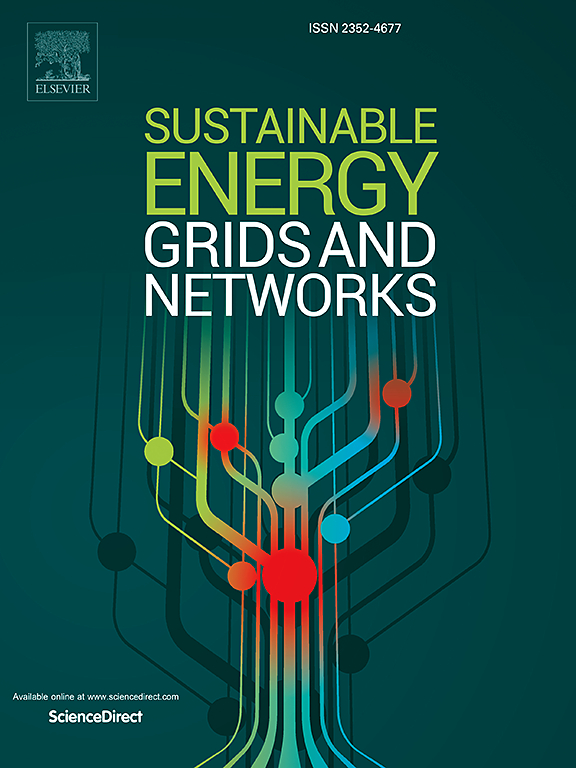一种利用有效风估算动态线路等级的气象站位置分析与选择方法
IF 5.6
2区 工程技术
Q2 ENERGY & FUELS
引用次数: 0
摘要
关于能源和气候变化的新展望鼓励电力公司增加可再生能源容量,改善管理和运输可再生能源的基础设施。可再生能源,特别是风力发电的增长,以及分布式发电的增长,创造了提供电网运行灵活性的需求。建立新基础设施或改造现有基础设施的经济、环境和行政障碍鼓励开发诸如动态线路等级(DLR)系统之类的替代方案。本研究解决了DLR系统在实际应用中出现的问题之一。本研究的目的是创建一种新的方法,允许分析由DLR系统现有配置引起的误差,并在设计阶段确定最合适的测量点数量和位置。这些方法基于模拟风分布估计(SWDE)方法,该方法利用风传播软件和数字高程模型获得沿线冷却模型。本文章由计算机程序翻译,如有差异,请以英文原文为准。
A methodology for the analysis and selection of weather station location for dynamic line rating using the estimation of effective wind
The new outlook regarding energy and climate change encourages electricity companies to increase the renewable power capacity and improve the infrastructure to manage and transport renewable energy. The increase in renewable energy, especially wind generation, together with the growth of distributed generation, creates the need to provide the flexibility to operate a grid. The economic, environmental and administrative barriers to creating new infrastructure or modifying existing infrastructure encourage the development of alternatives such as Dynamic Line Rating (DLR) systems. This study solves one of the problems that appear in the practical application of DLR systems. The aim of this study is to create a new methodology that allows the analysis of the error caused by an existing configuration of a DLR system and to determine the most appropriate number and location of measurement points during the design phase. These approaches are based on the Simulated Wind Distributed Estimation (SWDE) methodology, which obtains a cooling model along the line using wind propagation software and Digital Elevation Models.
求助全文
通过发布文献求助,成功后即可免费获取论文全文。
去求助
来源期刊

Sustainable Energy Grids & Networks
Energy-Energy Engineering and Power Technology
CiteScore
7.90
自引率
13.00%
发文量
206
审稿时长
49 days
期刊介绍:
Sustainable Energy, Grids and Networks (SEGAN)is an international peer-reviewed publication for theoretical and applied research dealing with energy, information grids and power networks, including smart grids from super to micro grid scales. SEGAN welcomes papers describing fundamental advances in mathematical, statistical or computational methods with application to power and energy systems, as well as papers on applications, computation and modeling in the areas of electrical and energy systems with coupled information and communication technologies.
 求助内容:
求助内容: 应助结果提醒方式:
应助结果提醒方式:


